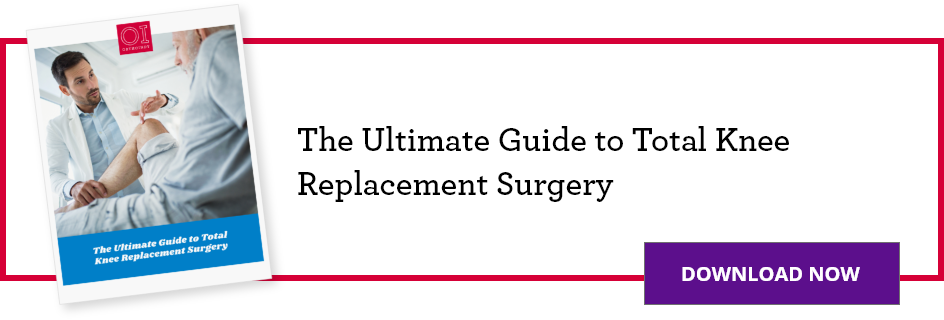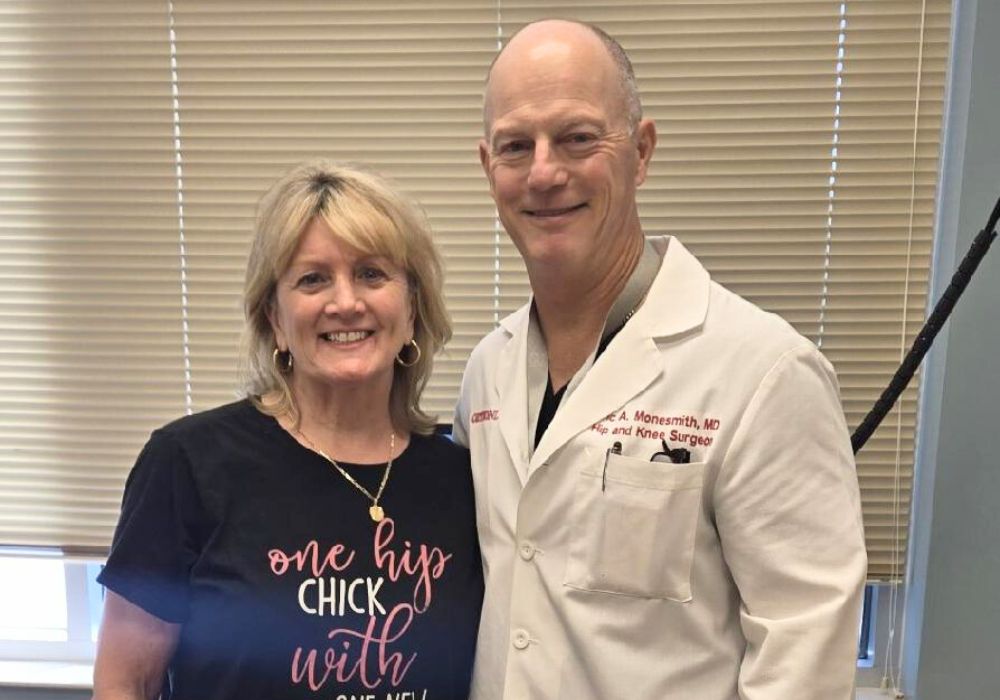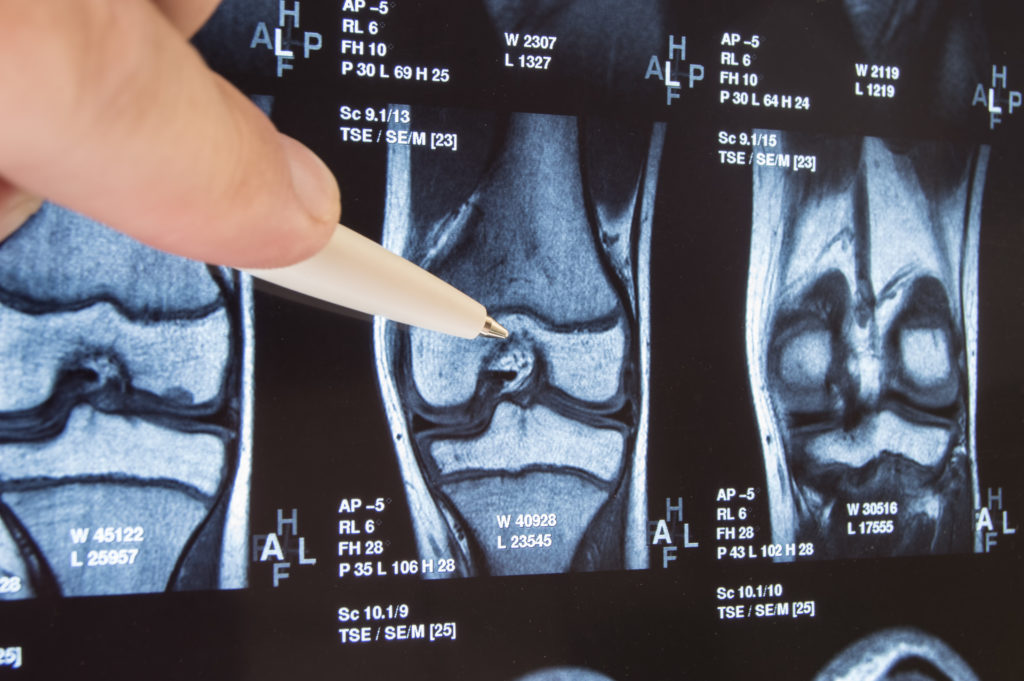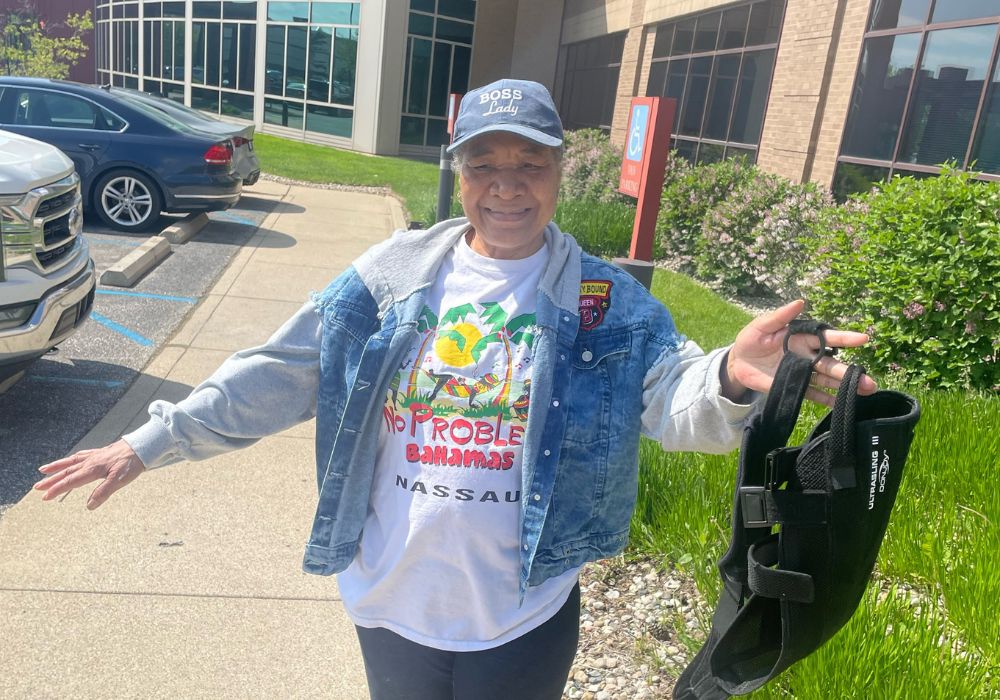THIS POST IS PART OF THE ULTIMATE GUIDE TO TOTAL KNEE REPLACEMENT
According to Mayo Clinic, DMARDs (disease-modifying antirheumatic drugs) are the first line of non-operative treatment against rheumatoid arthritis. These drugs can save your joint from permanent damage by slowing the progression of rheumatoid arthritis.
“Medical treatment with DMARDs has really improved during my career,” said OrthoIndy total joint replacement surgeon Dr. Ed Hellman. “Thirty years ago, we saw many rheumatoid arthritis patients with severe joint damage and deformity. This has become much less common. These drugs reduce inflammation and can prolong the life of the joint.”
The goal of rheumatoid arthritis treatment is to reduce pain, improve function and minimize the damage to your joints. OrthoIndy total joint replacement surgeon, Dr. Patrick Millikan explains the best treatment options for rheumatoid arthritis.
Rheumatoid Arthritis Anatomy
“Rheumatoid arthritis is the most common type of autoimmune disease,” Dr. Millikan said. “It most commonly affects the hands and feet, but also can involve many other major joints in the arms, legs and spine. The disease often presents with pain and stiffness in the morning, especially in the joints. Over time, it can affect the cartilage and surrounding soft tissue of the joints, leading to permanent damage.”
According to Dr. Millikan, there is a genetic predisposition for this disease, so it often runs in families. Autoimmune diseases are conditions where the immune system of the human body mistakes certain parts of the body as an enemy, like a virus or bacteria. Resulting in damage to those body parts over time.
Rheumatoid arthritis is common in wrists, fingers, hips and knees. A specialist is able to differentiate rheumatoid arthritis from other forms of arthritis because it is symmetrical. Meaning, if it affects one side of your body, it will often affect the other side. Other forms of arthritis will only affect one side of your body.

What is the best treatment for rheumatoid arthritis?
“Fortunately, many early stages of rheumatoid arthritis can be successfully treated with medication that blocks the immune system’s attempt to damage the joint,” Dr. Millikan said.
“However, if the medicines are not effective, or the disease is diagnosed in later stages, surgery may be necessary to improve a patient’s pain and function.”
Treatment for rheumatoid arthritis begins with non-operative methods through your rheumatologist. If non-operative treatments have failed, you will be referred to an orthopedic surgeon to discuss surgical options.
MAKE AN APPOINTMENT WITH A TOTAL JOINT REPLACEMENT SURGEON
Rheumatoid Arthritis Treatment Options
Consult your family practice doctor or a rheumatologist and find out how to treat your rheumatoid arthritis pain best.
“When rheumatoid arthritis is diagnosed before it has caused significant damage to joint surface cartilage, it can be treated by rheumatologists with DMARDs that moderate the immune response,” Dr. Hellman said.
Conservative rheumatoid arthritis treatment may include:
- DMARDs
- Nonsteroidal anti-inflammatory drugs (NSAIDS) like Motrin or Ibuprofen
- Corticosteroids
- Physical Therapy
- Daily movement exercises
If you still have rheumatoid arthritis symptoms and treatment has failed for several months, you may be referred to a total joint replacement surgeon. They will discuss alternative treatment for rheumatoid arthritis, like total joint replacement surgery.
Surgical Treatment for Rheumatoid Arthritis
According to OrthoIndy total joint replacement surgeon, Dr. Frank Kolisek, when non-operative treatments fail, it may be time to consider a joint replacement. Joint replacement surgery is the most effective treatment that will improve your hip or knee function.
“Any patient who has failed conservative treatment, who is medically healthy enough to undergo an operation and any patient whose function is deteriorating because of the diseased joint is a candidate,” Dr. Kolisek said.
When you undergo joint replacement surgery, the joint is not physically taken from your body, the pieces are replaced to help it function the best it can without its original parts.
For example, in a knee replacement, the ends of the bones connecting your knee are resurfaced with metal caps, emulating the original bone and a piece of plastic is put between those caps, acting as the cartilage. Your original tendons, ligaments and muscles will move and stabilize your new knee just like they did in your old one.
“Patients often think that we literally cut their knee out and put in a new one and that is not correct,” Dr. Kolisek said. “I tell my patients that the cartilage on the ends of the bones is like the rind on an orange. They used to have cartilage that capped the ends of the bones. When you lose the cartilage from osteoarthritis or from the synovium destroying it from rheumatoid arthritis, then the bones grind together and that hurts.”
Dr. Millikan adds that there are other potential surgical treatment options, depending on which joint the rheumatoid arthritis is affecting.
“While joint replacement is a predictable and effective form of treatment for rheumatoid arthritis in some cases, it may not be necessary or available in others,” Dr. Millikan said. “Fortunately, other potential treatments include removal of damaged or inflamed tissue, repair or relocation of ligaments and tendons, and even joint fusion.”
Rheumatoid Arthritis Recovery
Recovery varies depending on the severity of your initial pain and your activity level pre- and post-your total joint replacement surgery.
All recovery is relative to the patient, the procedure performed and the joint affected by rheumatoid arthritis according to Dr. Millikan.
“In the case of joint replacement, most patients will see rapid recovery for the first three months after surgery, with continued improvements for up to a year,” Dr. Millikan said.
If your conservative treatment for rheumatoid arthritis has failed, consult a total joint replacement surgeon to find out your options for getting your normal back.
To schedule an appointment at OrthoIndy, please call 317.802.2000 or learn more about OrthoIndy Total Joint Replacement.
Schedule an appointment
Your well-being is important to us. Click the button below or call us to schedule an appointment with one of our orthopedic specialists. If your injury or condition is recent, you can walk right into one of our OrthoIndy Urgent Care locations for immediate care. For rehabilitation and physical therapy, no appointment is needed to see one of our physical therapists.





